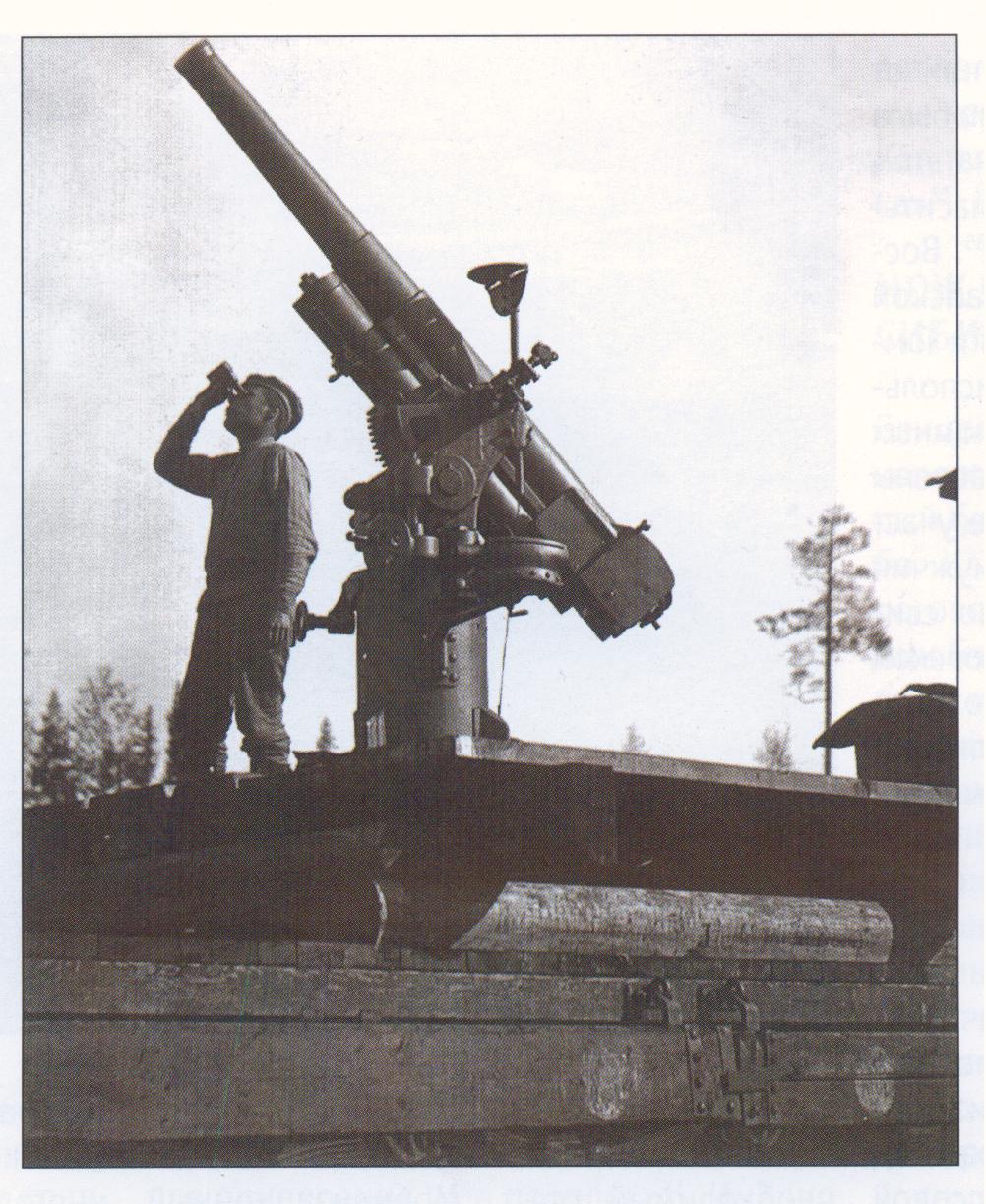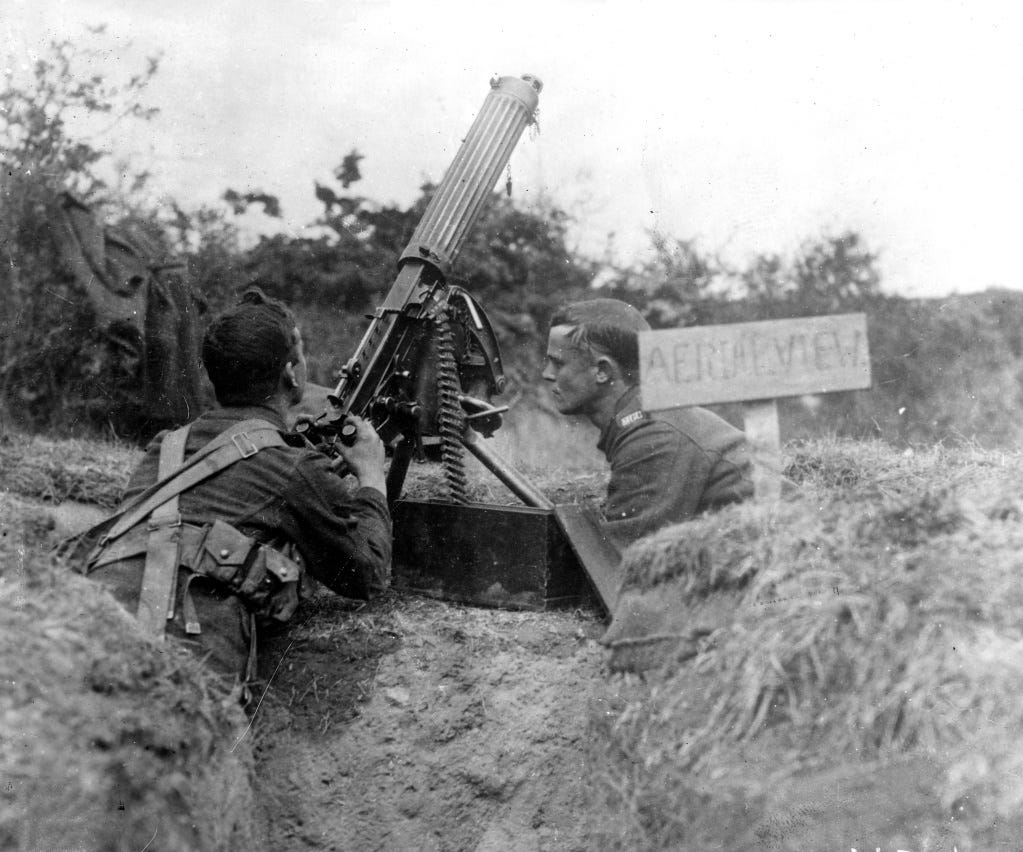Anti Aircraft Gun In Ww1 - The First World War anti-aircraft gun was revived, heard again at Dover Castle in 1915, entering service to counter the new threat of aerial bombardment from Zeppelins.
A refurbished anti-aircraft gun is fired at Dover Castle, Kent, by specially trained gunners Bill Harper, left, and James Pilinko. Photo: Gareth Fuller/PA
Anti Aircraft Gun In Ww1

From the White Cliffs of Dover a once painfully familiar boom is heard again: the sound of a British 3-inch World War I anti-aircraft gun, now one of the only remaining rivers in the world to return to firing range.
Commander Models 1/35 Scale Us 3 Inch Anti Aircraft Gun M1918
The gun has been installed on a reconstructed wooden platform below the officer's mess at Dover Castle and will be fired again by volunteer gun crews this weekend. It is next to a battery that was first built in the 19th century and was repeatedly upgraded as a fire command post at the end of World War II due to its panoramic view of the harbor and channel.
In late 1914, spotters looked around the clock — the command post was equipped with bunk beds, and actually had gas lights and cooking stoves — peering through long narrow windows and watching the ever-changing nature of the war.
Realizing that the war was facing a terrible new threat, gun production accelerated, against which Britain had no defense: aerial bombardment from airplanes and zeppelins, which could easily cross the 21-mile length of the canal from the continent. - Airships can travel up to 80 miles per hour and carry two tons of bombs.
Dover was their first destination. A blue plaque in the town records the site of England's first aerial bombardment. A bomb was dropped by a seaplane on December 21, 1914, and although no one was killed, a gardener who was cutting green boughs for Christmas decorations was blown from his tree. A map displayed in a new exhibit at the command post shows the city dotted with numerous red dots.
Forgotten History: The M247 Sergeant York And Its Propensity To Lock Onto Latrines Instead Of Enemy Aircraft
A fire command post at Dover Castle, where spotters keep watch 24 hours a day. Photo: Gareth Fuller/PA
By 1915, the first anti-aircraft guns were installed and eventually a searchlight was installed in the castle's large medieval tower. On August 9, 1915, they proved their worth when a shot from a newly mounted gun hit a zeppelin in the night sky, which managed to return to the Belgian coast and land in the sea.
Paul Pattison, an English traditional historian, described a 3-inch anti-aircraft gun whose cross platform could be folded down and attached to wheels for towing, a remarkably simple and efficient design that remained in service with modifications. World War II. It was finally declared obsolete in 1946, but many were sold around the world.

"It's a really nice piece of kit. There's nothing fancy or fancy about it," he said. "It was built to do a job, and it did it well."
Dev Blog #289 / Il 2 Sturmovik: Great Battles
He toured the world on a gun recovered from the Sinai desert and found the essential telescopic sights mounted on a rocking bar at the top of the weapon, now in a museum in Haifa, Israel. The museum, understandably, wanted to keep them, but now the parts attached to the Dover gun are being rebuilt.
The gun is a piece of obsolete military equipment salvaged by English Heritage from the old military ranges at Shoeburyness. Although it didn't reach firing status until the early 90s, it was first restored and installed over the years at Pentennis Castle, originally a Tudor castle in Cornwall.
Volunteer gun crews are specially trained to fire the gun every day until at least October. "It must be heard all over Dover, and still more during the day," said Pattison wistfully: "We are not allowed to fire it at full charge—it is a concern whether we can actually bring the whole. Cliff face down." The 8.8 cm Flak 16 was a German 8.8 cm anti-aircraft gun of World War II, a precursor to the 8, 8 cm Flak/Pak Flak 18/36/37 of World War II. Its contemporary name is 8, 8 cm. .your K.Zugflak L/45.
Designs for dedicated anti-aircraft guns existed before World War I, but few saw service when war broke out. Early anti-aircraft artillery guns used in World War I were essentially adaptations of existing medium-range weapons, mounted to fire at greater angles. By 1915, German military command realized that these were useless for anything other than intercepting vulnerable balloons and slow-moving aircraft.
Russian Old Green Anti Aircraft Gun Isolated Over White Stock Photo
As flight performance increased, many armies developed specialized AA guns with higher muzzle velocities – allowing the projectiles to reach higher altitudes. The first such German gun, the Flak 16, was introduced to the Kaiserliche Marine in 1917 using a conventional 88 mm caliber.
The barrel for the 8.8 cm K.Zugflak L/45 is made of steel and 45 calibers. The gun has a semi-automatic group horizontal sliding-wedge breech to increase its rate of fire. A hydro-pneumatic recoil system at the top and bottom of the barrel, with an equalizer to balance the gun. The gun can travel 360° and range in elevation from -4° to +70°.FORT SILL, Okla. (August 15, 2013) -- 'The first mobile, dedicated anti-aircraft gun was the Model 1918 3-in. . Several hundred were built, but the only surviving gun is now on display at the Air Defense Artillery Museum at Fort Sill.
"This is a rare piece in our collection," said Jonathan Bernstein, ATA Museum Director. "Since I got here last year, I've been looking to restore two of our special pieces, and this rifle has been my top priority."

Although the museum has had the rifle in its collection at Fort Bliss, Texas since 1989, it has never been on display because it is so badly rusted. The gun has now been restored and joins 150 other major artefacts that will be available for viewing at the museum on August 2.
Holden Built Wwii Anti Tank Gun Sells For $45,000
Fort Sill's gun no. 48 and built by the New Britain Machine Company in Connecticut, according to the manufacturer's plaque on the gun. The service history of this particular gun is unknown, Bernstein said. It was restored by the unit crest of Fort MacArthur's 63rd Coast Artillery Regiment, which used this type of gun in defense of the Southern California coast.
"The best photos of the service are the complete set of 63rd signs," Bernstein said.
ADA museum staff send many of their pieces to Fort Sill's Directorate of Logistics for cosmetic restoration, and they do a great job, Bernstein said. However, the M1918 was so badly corroded that it was sent to a contractor, American Aero Services in New Smyrna Beach, Fla.
He said sending it to a professional restorer is the way to go because they know how to deal with rust issues without causing too much damage to the gun.
Austro Hungarian Aircraft Gunner With An Arranged Anti Aircraft Gun Made Out From Mausers C 96, 1917
"The gun is fully operational now," said Bernstein, who turned the handle to control the azimuth, "but obviously it's fragile."
In the early 20th century, America's greatest threat was the coastal artillery defenses and artillery bombardment of American cities by foreign warships sailing off its coasts.
"The writing is on the wall that future threats will be far from our shores, beyond the range of coastal artillery guns, and they will be able to launch planes into our cities all day long," Bernstein said. .

To counter the air threat, shore artillery teams were used as AA gun teams because they were used to attacking moving targets (ships) as opposed to artillery teams firing at fixed points, he said.
Wwi: British Troops, 1917. /nbritish Soldiers Operating An Anti Aircraft Gun During The Battle Of Broodseinde In Flanders, Belgium. Photograph By Ernest Brooks, 1917. Poster Print By Granger Collection
The three-inch gun took about 12 personnel to fire Bernstein. Aiming the gun required a crew of four: two to travel (azimuth) and two to maintain its elevation. The crew can fire 20 rounds per minute. A battery consists of four guns.
He said the gun fired a fuse timed with a flak shell. "The gunners know the velocity of the shell, so they cut the fuse to determine at what height the flag round will explode."
The 1918 model was phased out in 1928 as it entered service in December 1918 following the end of World War I.
The Model 1918 is on display and will eventually take its permanent place in the 100-year ADA timeline. A pre-World War I sight French 75mm Model 1897 field artillery gun modified for AA fire. After it was an anti-aircraft searchlight exhibit, Bernstein said.
Aa Sites In Sheffield
To see the 3-inch AA gun and other ATA artifacts, visit
20mm anti aircraft gun, anti aircraft machine gun, anti aircraft ww1, russian anti aircraft gun, nerf anti aircraft gun, anti aircraft gun games, ww1 anti tank gun, bofors anti aircraft gun, lego anti aircraft gun, buy anti aircraft gun, anti aircraft gun, 57mm anti aircraft gun
0 Comments